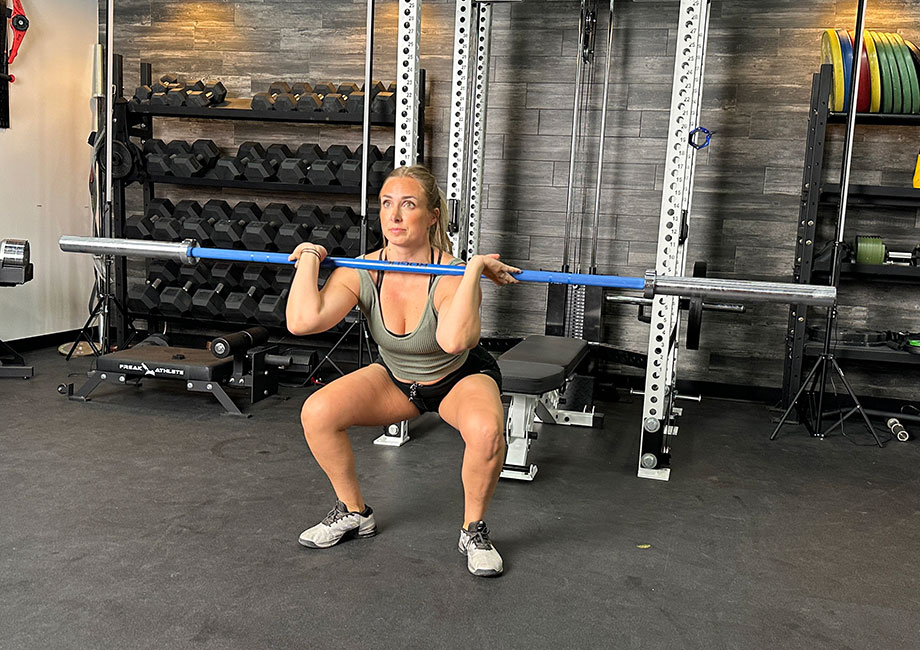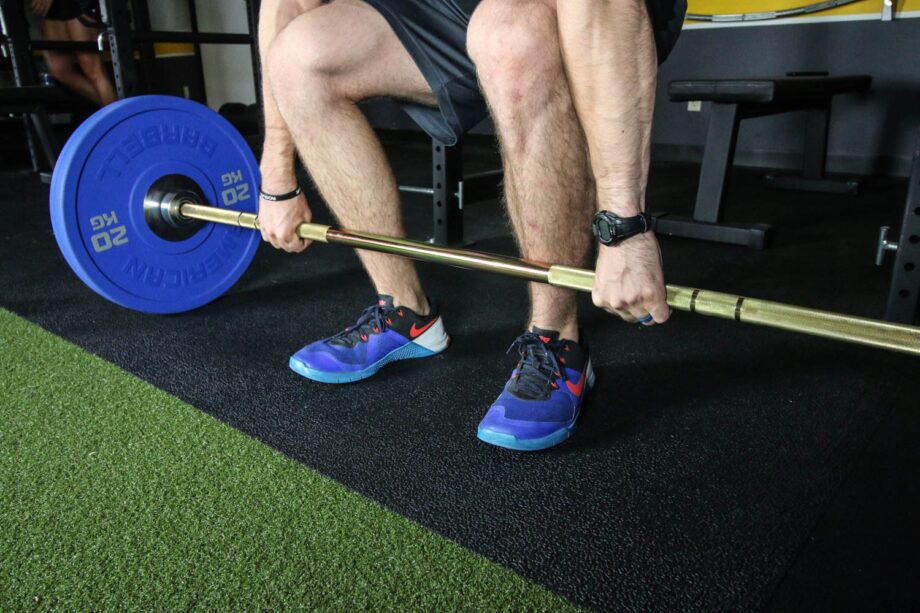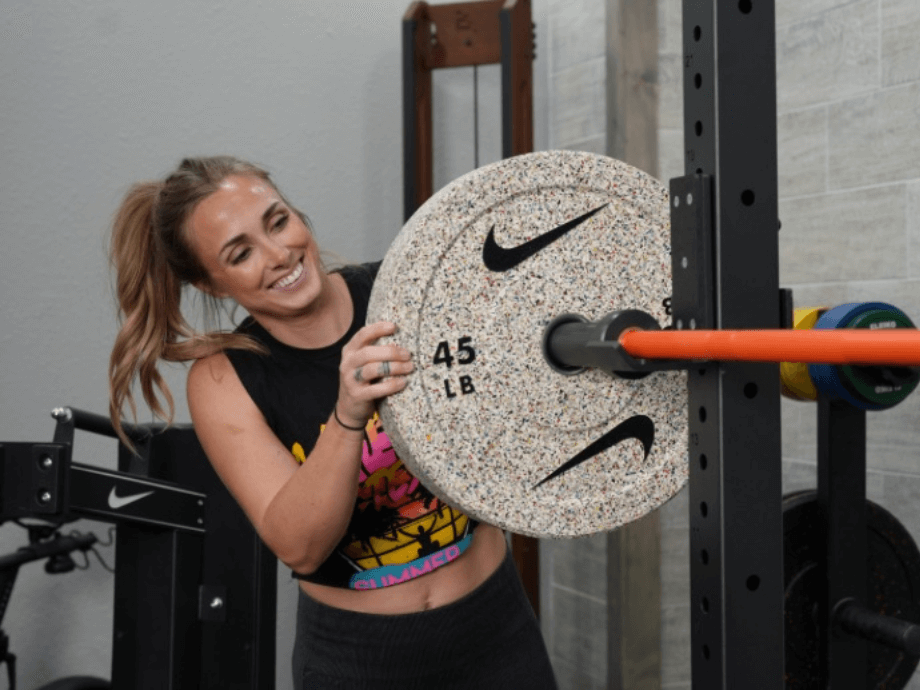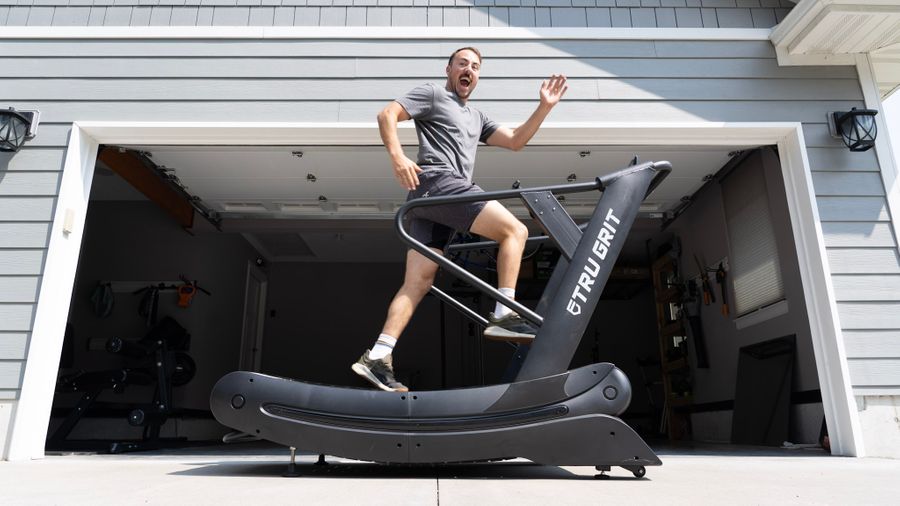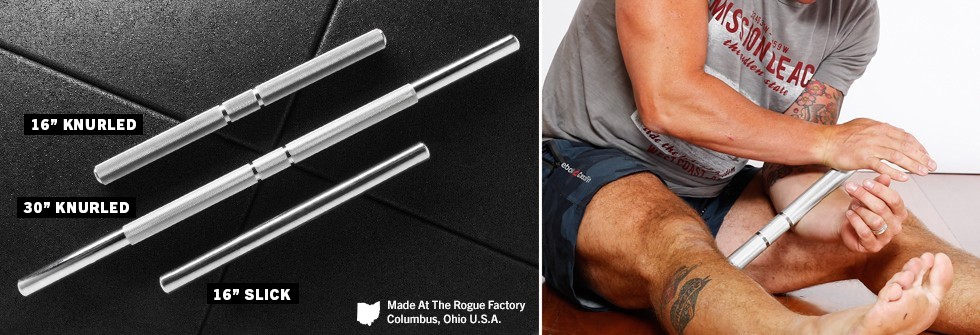If you’re unfamiliar with the thrusters exercise, it combines a front squat with a shoulder press. The thrusters workout is a favorite in the CrossFit Games, AMRAP workouts, WODS, and a fantastic full-body exercise. Combination exercises like thrusters work more muscle in less time, which is a fantastic way to build muscle and burn fat.
When you see it performed, it doesn’t look like a complicated exercise, but there are a few things to remember. Being a combination exercise, it’s two movements in one, but it is performed in one fluid movement (more on that later). Also, your squat load is limited to how much you can overhead press. The legs might be wanting more.
RELATED: Complete Guide to Compound Exercises
But when your workout time is limited, or you want to improve full-body power and cardio, the thrusters workout may be right up your alley. As a certified personal trainer (CPT), I—along with DPT and founder of FitCare Physiotherapy & Wellness Dr. Bo Babenko—dive into all things thruster so that you can get the best out of this awesome exercise.
How to Do a Barbell Thruster
- Set up the barbell in the squat rack at around shoulder height.
- Unrack the barbell and hold it at shoulder height in the front rack position. This is your starting position,
- Squat until your thighs are about parallel with the ground.
- When rising, press the barbell overhead until your elbows are extended and you’re standing tall.
- Slowly return the barbell to the front rack position, reset, and repeat for desired repetitions.
RELATED: Best Olympic Barbell
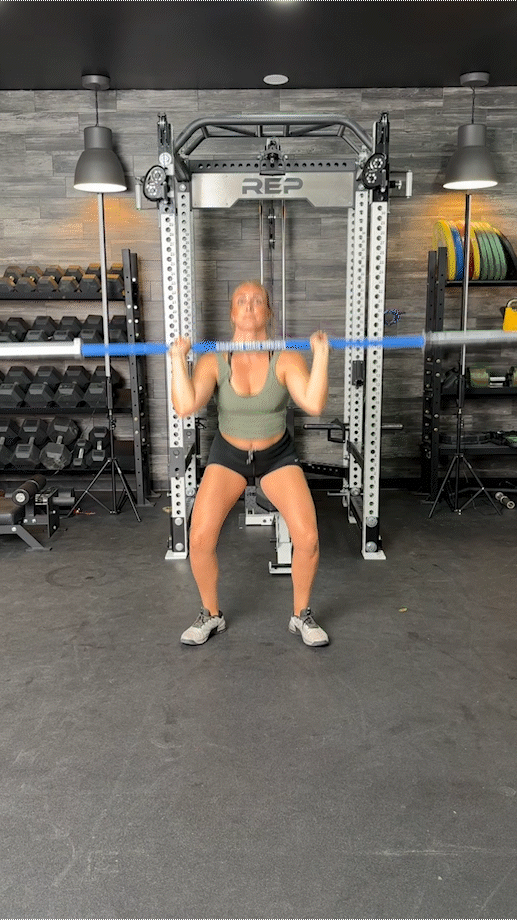
Benefits of Thruster Workouts
You’ll notice one thing when you start performing the thrusters exercise. You’ll feel like you got this the first few reps, and your heart rate will increase after about four to six reps. So, the thruster does have some cardiovascular benefits. In the opinion of this certified personal trainer, they’re better than the burpees exercise and lunges.
Here are a few vital benefits of performing the thrusters workout.
Full-Body Strength and Muscle
Here’s a quick rundown of the muscle groups trained during the thrusters exercise. Calves, quads, adductors, glutes, hamstrings, anterior core, upper back, chest, deltoids, and last but not least, triceps. That’s quite a list, isn’t it? You might not be training the legs as heavily as possible, but you will be training more muscles.
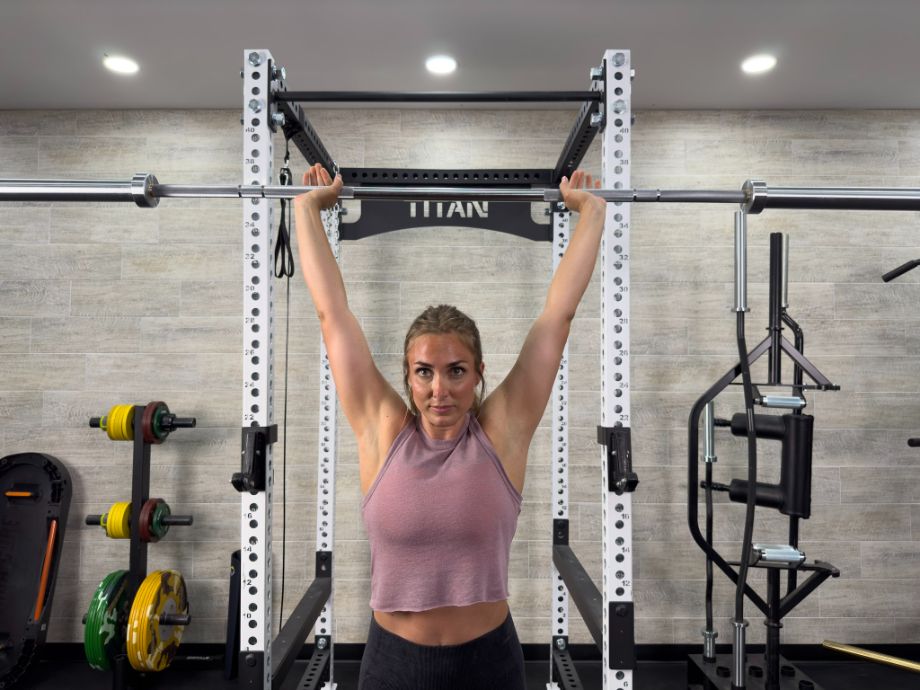
Great for Fat Loss
Combination exercises that involve movements of both the lower and upper body burn more calories1 because you’re working more muscle and sucking in more air during and after the exercise. Both these little fun facts mean thrusters are a great addition to any fat-loss workout.
RELATED: Conditioning Workouts
Better Core Strength
The clean or front squat position requires engaging your upper back and anterior core to maintain a good lifting position. You may not have to worry about extra core work because of the extended time under tension; two exercises in one means you’ll get your core work in.
Improved Triceps and Shoulder Strength
Overhead and push presses are excellent exercises for increased strength and shoulder and triceps hypertrophy. When you become proficient with the thruster exercise, it can often be performed with more weight than the exercise mentioned. More weight = more size and strength.
RELATED: Get Pumped With This Chest, Shoulder, And Triceps Workout
Trainer Tips for Form
Selecting the correct load is vital for the thruster exercise because you’re limited by how much you can overhead press. A good starting point is a load you can barbell overhead press for 10 to 12 reps. Here are a few more of my CPT tips.
Keep Your Elbows Up
Don’t forget that the thruster is part front squat. This means the barbell is in the front rack position, and to avoid dumping the barbell and to keep good posture, you need to keep those elbows up and your upper back engaged. The band and dumbbell thruster are good variations if you struggle with the barbell variation.
RELATED: Full-Body Workout At Home
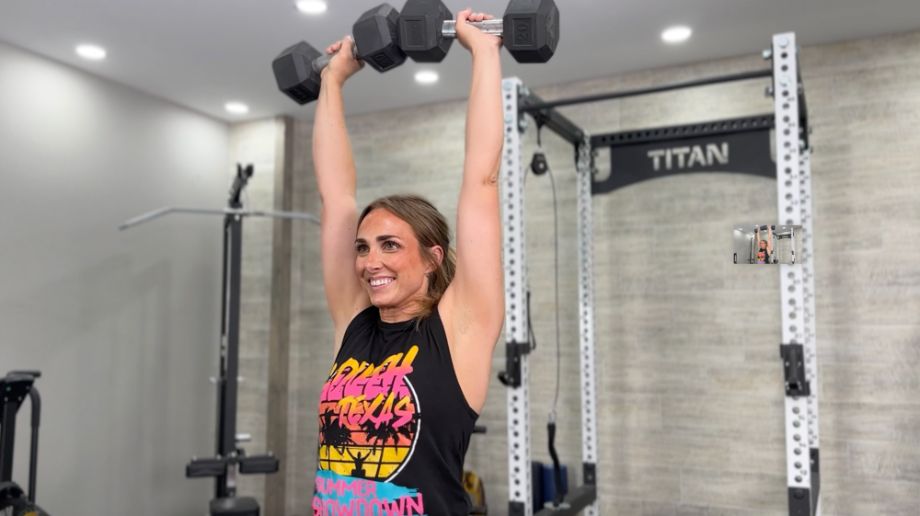
Chest Up, Shoulders Down
The favored cue of personal trainers everywhere for a good reason because it helps maintain a neutral spine. Particularly with the setup and the front squat part of the thruster, this cue puts you in a good lifting position so the correct muscles can do their job.
It’s One Movement
It may seem like two movements, the squat and the press, but they must be performed seamlessly. You start when you’re rising from your squat to harness the power of your legs to press the weight overhead.
Common Thrusters Workout Mistakes
One of the biggest mistakes you can make with any strength training exercise is to use a load you cannot control. Always start on the lighter side for your first set because you can always increase the weight on your next set. Here are a few more common thruster mistakes.
Dropping the Elbows
Keeping the elbow up stops you from dumping the barbell forward and losing the upper body position. The dumbbell thruster is an excellent alternative if you’re having trouble keeping the front rack position.
RELATED: Underrated Dumbbell Exercises
Lack of Coordination
The beauty of the thruster is being able to use more weight overhead than your standard overhead press. Why? Because your quads will give you extra oomph. But the most common thruster mistake that Dr. Bo Babenko—owner of FitCare Physiotherapy & Wellness—notes is the lack of coordination between the legs and arms. “When lifters don’t connect their legs with their arms, they lose momentum,” explains Bo.
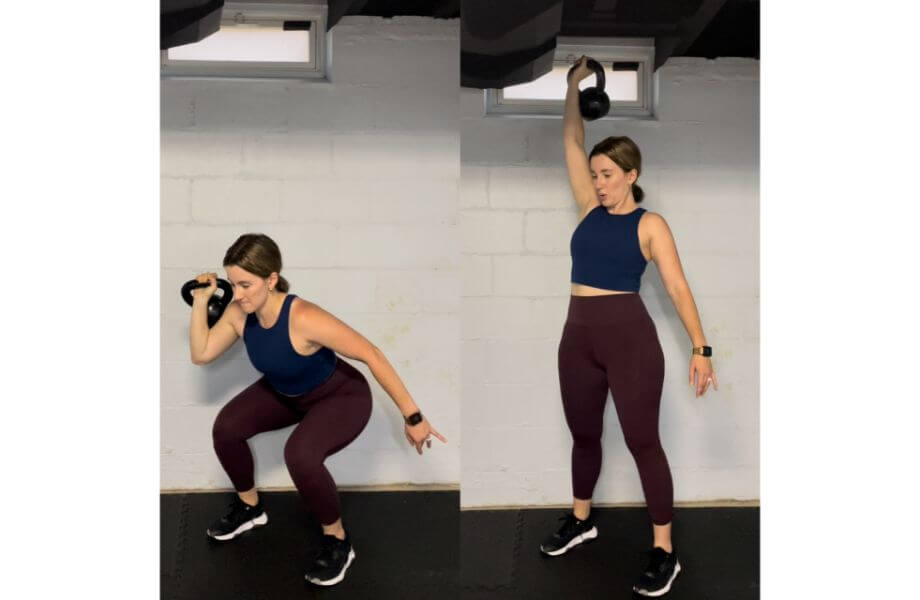
Hyper Extending the Lower Back
At the end of the thrusters movement, there’s a tendency to over-extend the lower back to finish the press. If you keep doing this, your lower back will not be your friend. Instead, squeeze your glutes at lockout to keep this to a minimum.
Thrusters Workout Variation
Not all exercisers have the mobility or experience to press a barbell (or even dumbbells) overhead, so having a variation in the mix is excellent. Here is my favorite thruster variation if this is the case.
Single-Arm Kettlebell Thruster
Why do it: Because the single-arm kettlebell thruster is a unilateral exercise, it will strengthen pressing imbalances between sides. Plus, the offset nature of the kettlebell and its shape makes it easier on the shoulders to press overhead.
How to do it:
- Clean the kettlebell to the rack position with your shoulders down and chest up.
- Position your feet in your preferred squat stance.
- Squat until your thighs are parallel to the floor
- Rise and begin pressing the kettlebell overhead.
- When you’re at lockout, slowly lower the kettlebell back to the rack position, reset, and repeat for desired repetitions.
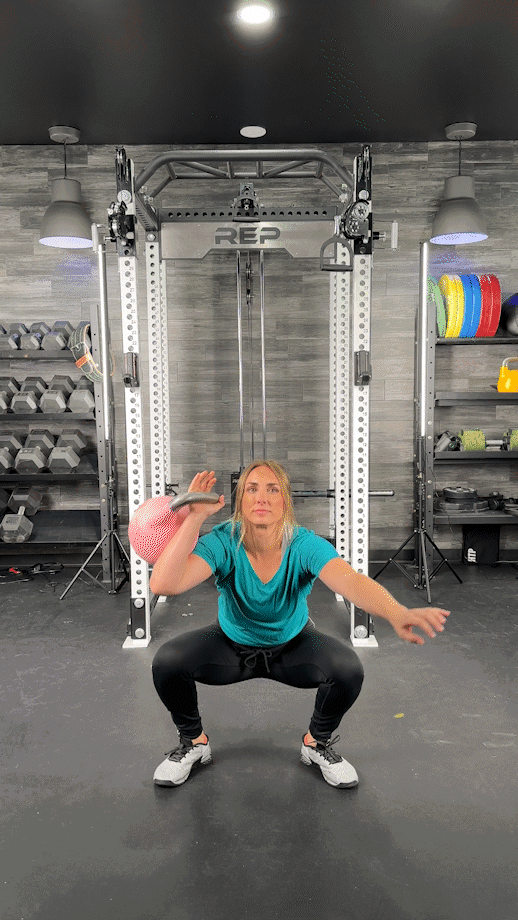
Dumbbell Thruster
Why do it: Not everyone has the mobility to maintain the barbell clean position, and this is when the dumbbell thruster comes into play. Because you’re lifting each dumbbell separately, you’ll strengthen imbalances between sides, too.
How to do it:
- Grip a pair of dumbbells and perform a biceps curl to get them to shoulder height.
- Get your feet into a squat position with your shoulders down and chest up.
- Squat until your thighs are parallel to the ground.
- While rising, start the press.
- Slowly lower the dumbbells back to shoulder height when you are at lockout.
- Reset and repeat.
RELATED: Full-Body Workout At Home
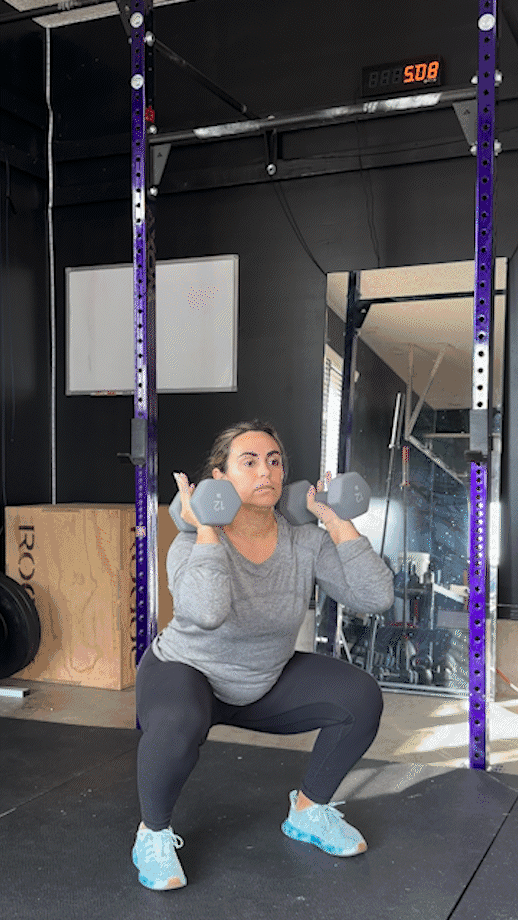
Thrusters Workout FAQs
What muscles do thrusters work?
More to the point, what muscles don’t thrusters work? The main muscles trained by the thruster movement are calves, quads, adductors, glutes, anterior core, upper back, chest, deltoids, and triceps.
What is a thruster workout?
A thruster workout is a combination exercise that puts a squat and an overhead press together, performing as one smooth movement. It is also a full-body exercise involving the lower and upper body that pairs strength and agility.
Are thrusters good for building muscle?
Thrusters are good for building muscle because of the large amount of muscle groups they train. Thrusters don’t overload the legs as much as a regular squat but are great for adding volume for hypertrophy. Additionally, the thrusters exercise can add muscle to the upper body because you can press more overhead due to the lower body’s involvement.
RELATED: The Best Kettlebell Strength Workouts To Build Muscle
What are the benefits of thrusters?
The most significant benefit of thrusters is the amount of muscles they can train in one movement. This allows you to build full-body strength. Other benefits include improved core strength, chest, triceps, and shoulder gains, and the potential for enhanced fat loss.
References
1. Compound Exercises. (2022, August 18). Physiopedia, . Retrieved 20:54, September 5, 2023 from https://www.physio-pedia.com/Compound_Exercises


